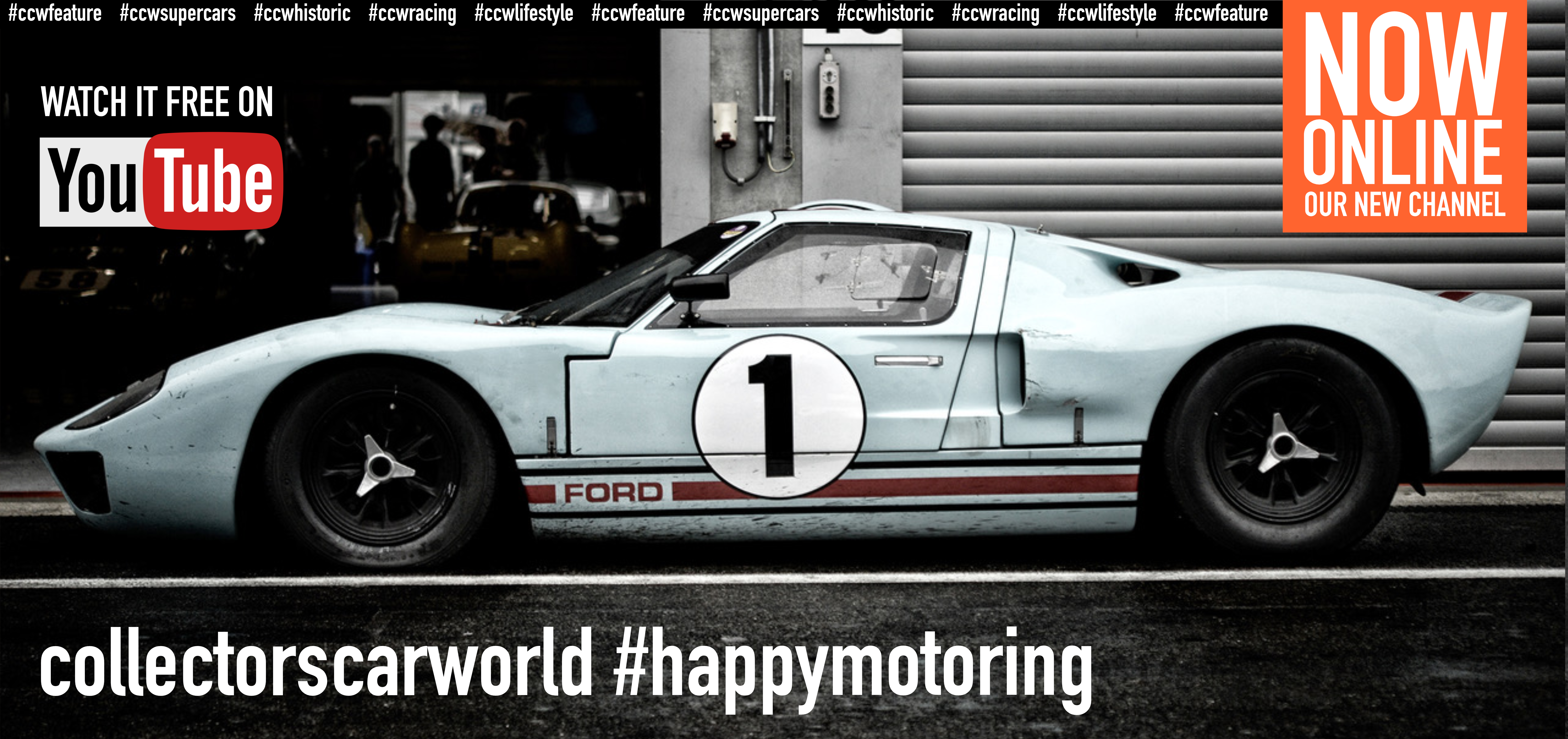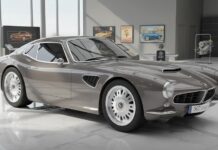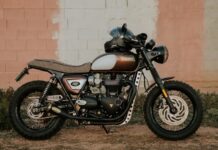BMW has been building cars for more than a century now, with many of its cars famed for their rear-wheel-drive performance and beguiling style. To own a BMW has been the desire of many a young driver, the culture surrounding its cars unlike any other. But which is the best of BMW road car? Goodwood has narrowed it down to their favourite eight…
BMW 303 – 1933
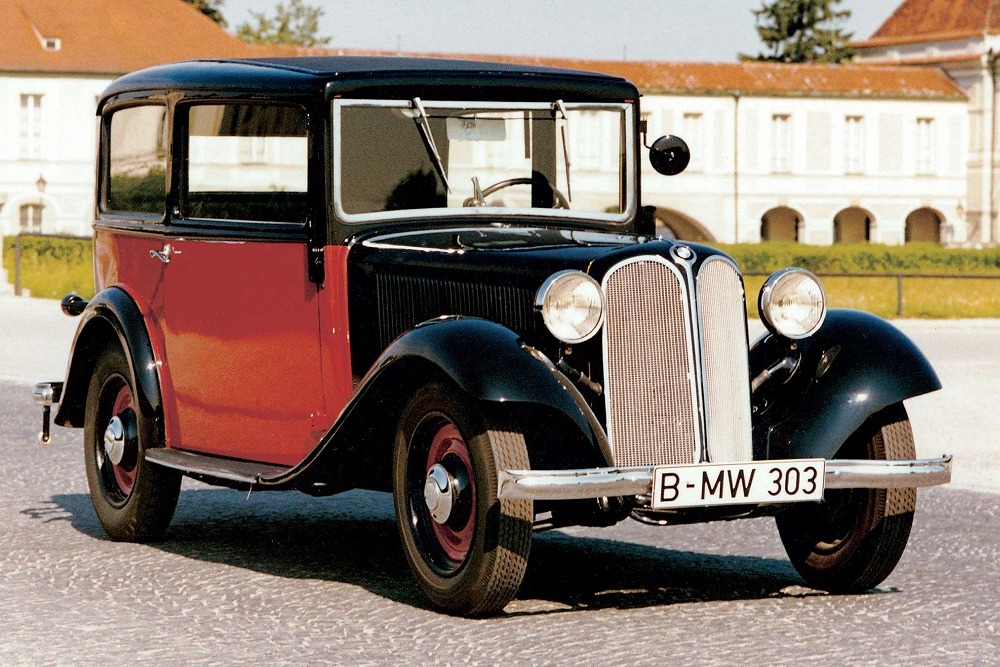
Topping the list is the original ‘Driver’s BMW’, and the car that brought a whole host of firsts to the BMW brand. Not only was it the largest car BMW had ever built, it boasted the first straight-six engine in its class – a 1.1-litre unit with two side-mounted carburettors – and was the first BMW to wear the now legendary kidney grille.
Designed by Fritz Fiedler, who had just joined the brand, it featured an innovative chassis comprising a light, tubular steel frame, new axles, quality suspension and direct rack-and-pinion steering. As a result, the 303 weighed just 750kg, which, combined with its 30PS (22kW) output, enabled it to achieve a top speed of 55mph. The following year, the BMW 315, which was identical aside from its uprated engine of 1.5-litres and 34PS (25kW), broke the 100km/h (62mph) marker.
The 303 was available from the factory in saloon, four-seater convertible, two-seater sports convertible, touring car guises, plus as a chassis to which customers could add their own choice of coachwork. In its one year of production, 2,300 were built.
BMW 328 – 1936

While the 328 was a popular 2.8-litre powertrain offered by the German manufacturer two decades ago, the example that Goodwood is referring to far predates any modern motor. Produced between 1936 and 1940, the 328 was a grand, open-topped sportscar designed by BMW’s post-WW2 chief of design Peter Szymanowski and Fritz Fiedler.
It featured an aluminium body atop a steel ladder frame, with leaf springs at the front and rear. A 2.0-litre M328 straight-six engine coursed under the bonnet, fed by three Solex 30 JF downdraft carburettors and producing 80PS (59kW) at 5,000rpm through a four-speed manual box.
It was quite the challenger in its day, winning its debut race – the 2.0-litre class at the 1936 Nürburgring Eifelrennen in the hands of Ernst Henne, followed by more than 100 class wins in 1937 (including the RAC Tourist Trophy). In 1938, it again won its classes in the RAC TT, the Alpine Rally, and the Mille Miglia, followed once more by the RAC Tourist Trophy in 1939, and a formidable first in class and fifth overall in the 1939 24 Hours of Le Mans. Nearly a decade later, in 1948, Frank Pratt won the Australian Grand Prix driving a 328.
While production ceased in 1940 after 464 units, the 328 had a lasting impact on car design, particularly on Bristol cars, which produced its first model, the 400, with heavy influence from BMW’s 328 technical plans (and engineer Fritz Fiedler).
BMW 507 – 1956

The BMW 507 was conceived when US automobile importer Max Hoffman convinced BMW to create a convertible to sit in the middle market between the expensive Mercedes-Benz 300SL and the affordable Triumph and MG models.
Derived from the 501, 502 and 503 saloons, it was powered by BMW’s aluminium alloy 3.2-litre overhead-valved V8, fed by two Zenith 32NDIX two-barrel carburettors and producing around 150PS (110kW). Through its four-speed manual box, it could accelerate to 62mph in 11.1 seconds and top out at 122mph.
Production costs pushed the price to double what Hoffman had intended (at $10,500, or $93,000 today), and despite its attractive styling, powerful engine and a number of celebrity owners (including Elvis Presley), the model was a flop and saw just 252 units sold – a far cry from the 5,000 per annum that Hoffman had predicted. BMW was left on the brink of bankruptcy by the 507 and the car was consigned to the history books.
BMW 3.0-litre CSL ‘Batmobile’ – 1972
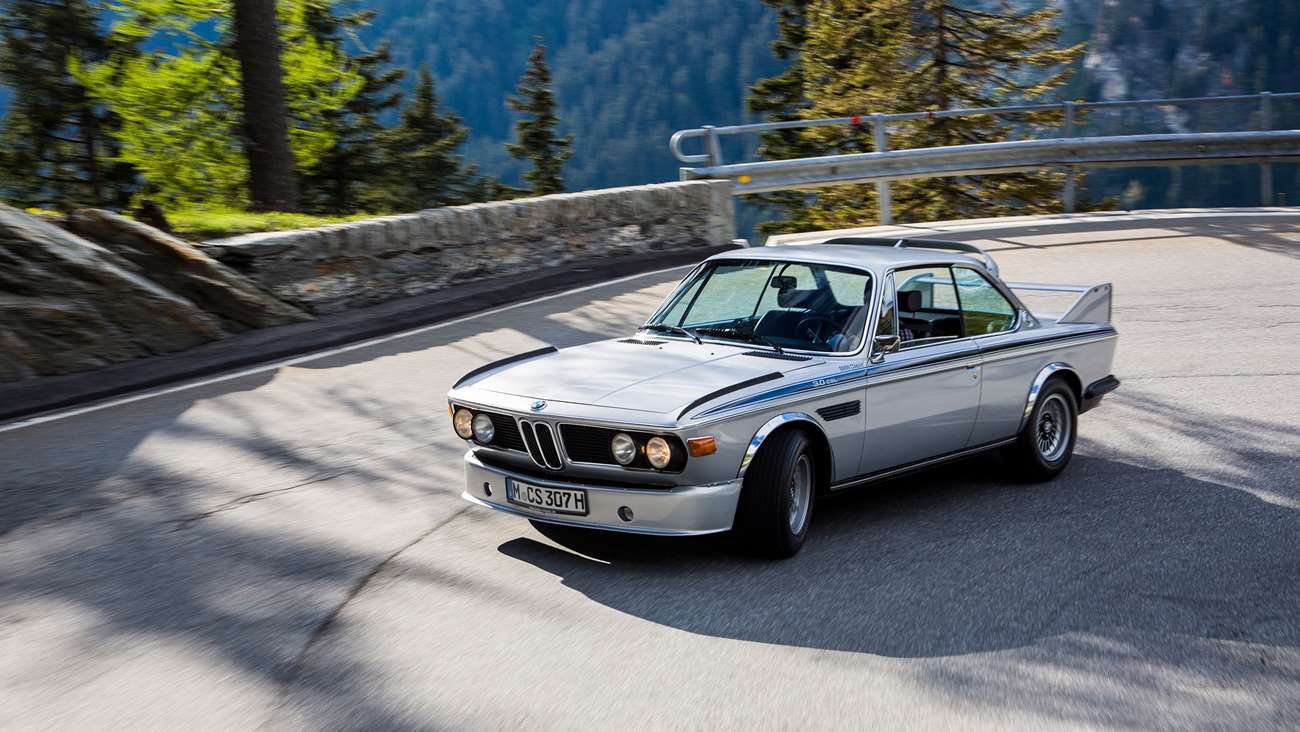
To call the Batmobile a road car is like calling a whale a mammal. While technically true, in reality, the Batmobile is unlike any of the other road cars that have made the list.
Derived from the E9 Coupe, the 3.0 CSL was a homologation special produced in limited numbers (1,625) to enable the model to race in the European Touring Car Championship. Effectively, it was a lightweight, wide-bodied, performance weapon.
To achieve this low weight (to which the L in the CSL designation alluded, ‘L’ meaning ‘leicht’ or ‘light’), BMW used thinner steel in the body, aluminium alloy in the doors, bonnet, and boot lid, and Perspex for the side windows. While the engineers removed any unnecessary trim and soundproofing in European models, the 500 UK models retained the soundproofing, electric windows, and stock E9 bumpers on the insistence of the importer.
Initially powered by the 2,986cc M30 straight-six of the 3.0 CS, in August 1972 the engine was upgraded to 3,003cc, in order to compete in the ‘over three litre’ racing category before, in July 1973, it was increased again to 3,153cc, a configuration which produced 206PS (151kW) at 5,600 rpm and 286Nm (211lb ft) of torque at 4,200rpm.
This latest model was homologated in July of that year with the aerodynamic package that earned the CSL its superhero moniker. The large air dam, short front fenders fins, roof spoiler, and a tall rear wing were reminiscent of the Batmobile.
While some very lucky drivers were enjoying their 3.0 CSLs on the road, it was dominating on the track, with CSL drivers winning the ETCC Drivers title six times from 1973 to 1979, and three rounds of the 1976 World Championship for Makes in the Group 5 Special Production guise.
BMW 2002 Turbo – 1973
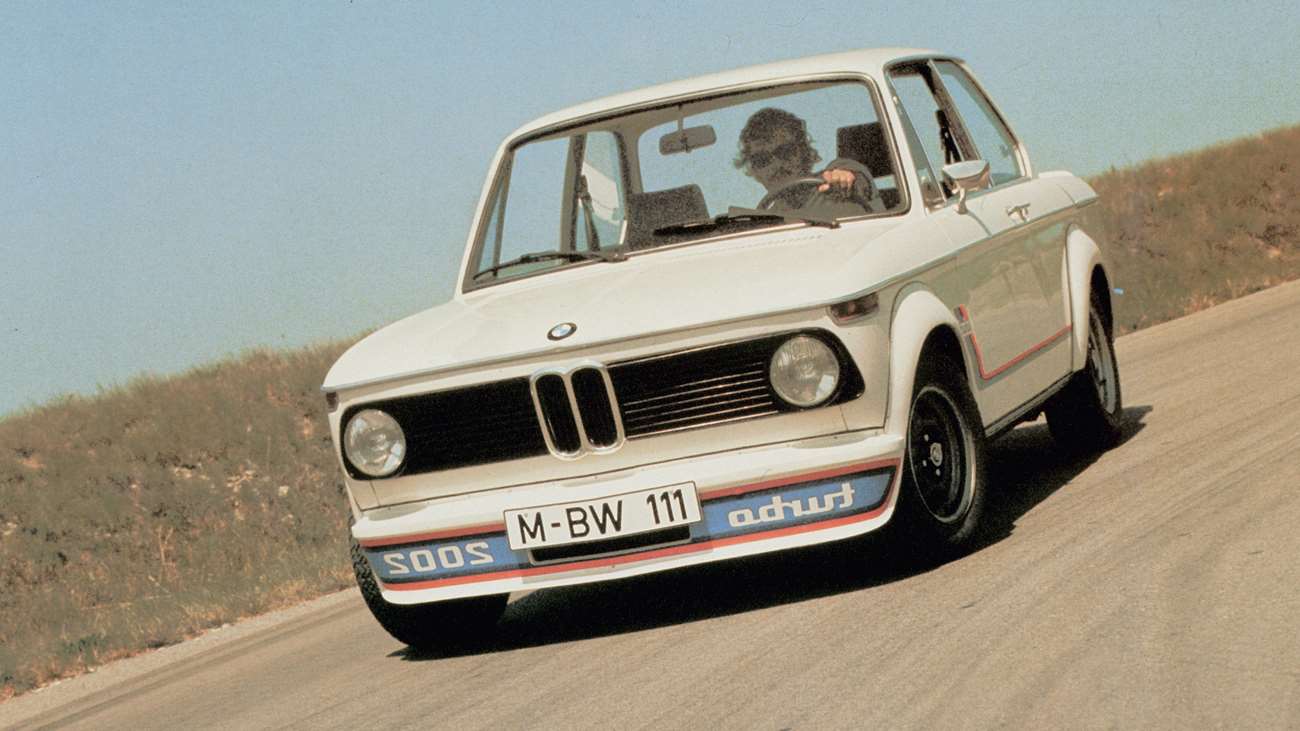
What would this list be without the 2002 Turbo – arguably the coolest BMW of them all? Back when turbos ruled the roads and the 1973 oil crisis was yet to explode, the German manufacturer decided to spice up its saloon cars with its first turbocharged production car. Enter the wide-bodied, attention-seeking adolescent that was the 2002 Turbo.
Taking the 2002 tii engine, BMW added Kugelfischer mechanical fuel injection (with integrated boost enrichment feature), a KK&K turbocharger and a compression ratio of 6.9:1 in order to prevent engine knocking.
Making 172PS (126kW) at 5,800rpm and 240Nm (177lb ft) of torque at 4,000rpm, it was significantly more potent that the standard model. Owners reported poor performance under 4,000rpm, at which point the car would instantly quadruple its torque, catching many unawares and sending them skidding out of corners.
Nonetheless, it was BMW’s loveable rogue – until the aforementioned oil crisis that was, at which point such cars became excessive and extinct. As a result, just 1,672 were built, cementing the 2002 Turbo’s position as a future classic and the poster star of many a teenage boy’s bedroom in the years to come.
BMW Z8 – 2000
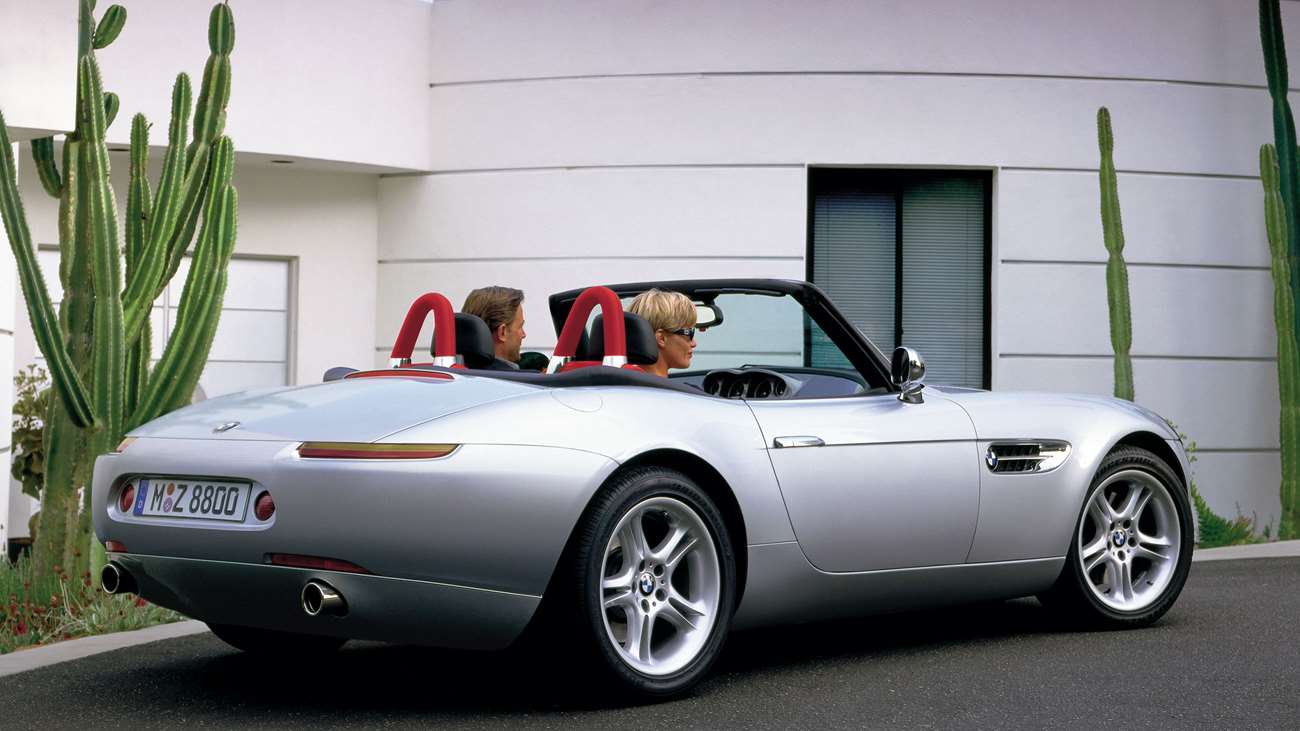
Licence to thrill? The Z8 certainly has one, after starring in the 1999 Bond epic, The World Is Not Enough. Well, sort of. With the production model not actually debuting until seven months after the film’s release, the model on screen was reportedly a Corvette engine sat in a kit-car chassis. Nonetheless, the Z8 more than deserves its spot on the top BMW road cars list for its unique design, which reportedly begun as a styling exercise intended to celebrate the 1956–1959 BMW 507 (see above).
The limited production model arrived in 2000, featuring the S62 engine of the E39 M5 sat behind the front axle of its all-aluminium chassis and body. At 4.9-litres, this V8 engine produced 400PS (294kW) at 6,600rpm and 500Nm (414lb ft) of torque at 3,800rpm, allowing the lightweight car to sprint from nought to 62mph in just 4.7 seconds.
Alongside its extensive tech, the Z8 was sold with the promise of spare parts availability for 50 years, an effort from BMW to cement the hand-finished car as a future classic.
BMW X5 – 1999
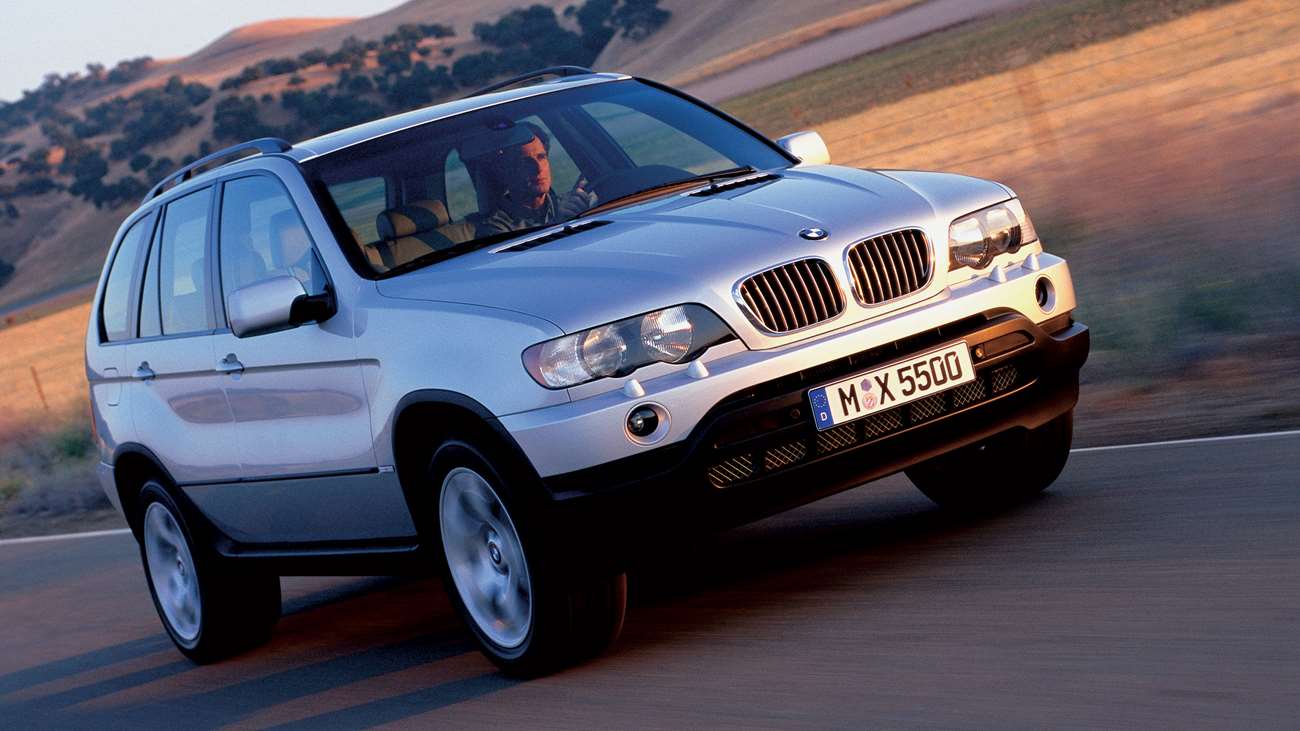
In 1999, BMW took a diversion from the norm and debuted its first SUV, or rather SAV (Sports Activity Vehicle) as the manufacturer called it, referring to its on road capability. Known as the X5, the car was available with automatic or manual transmission paired to a range of straight-six and V8 petrol and diesel engines.
So successful was it that second, third and fourth generations followed, as did a performance derivative and other X models. Heralded for being comfortable, fun and stylish, the X5 proved that BMW wasn’t constrained to its saloon car mould and could adapt in line with consumer demand. It was also the right car at the right time, as, like the Porsche Cayenne, the X5 debuted at just the right time, when estate cars and MPVs were falling out of favour.
BMW i8 – 2014
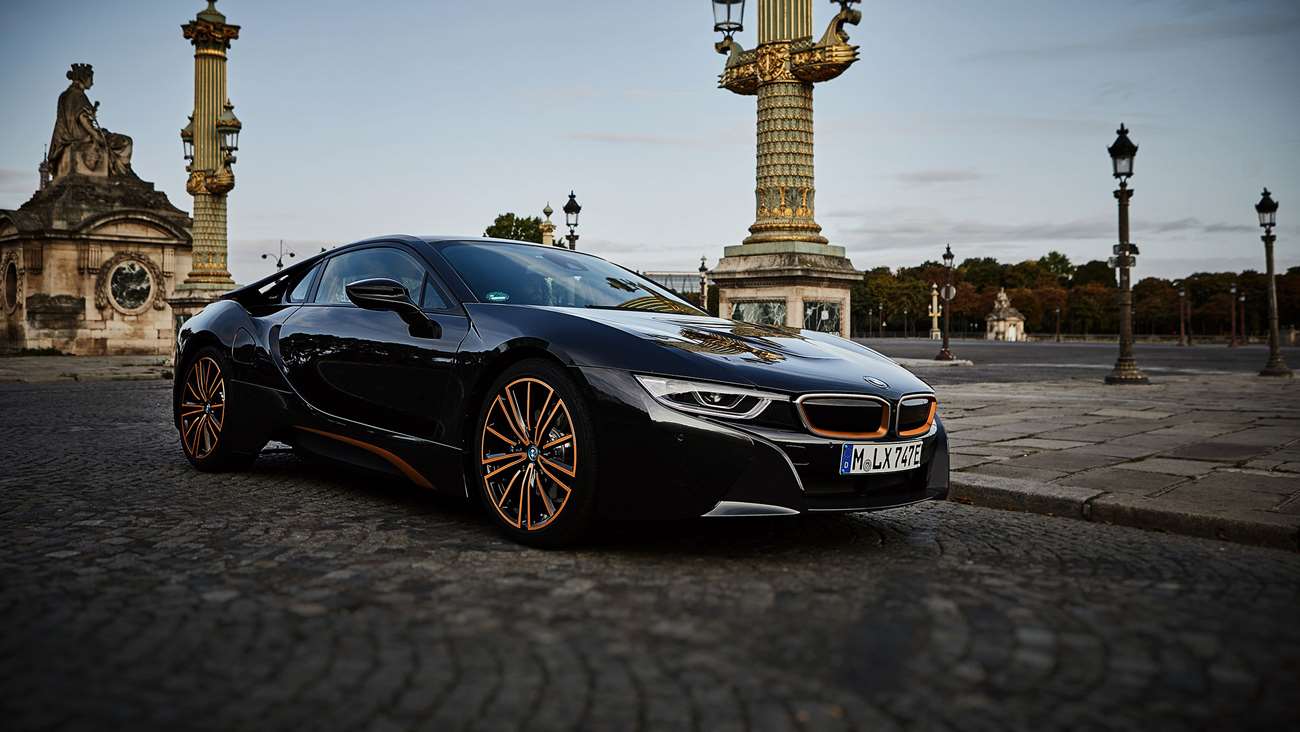
It’s fair to say that BMW was well ahead of the game when it unveiled the i8 back at the 2013 Frankfurt Motor Show. With styling borrowed from Star Trek and an innovative plug-in hybrid engine, the i8 could accelerate to 62mph in 4.4 seconds and achieve an all-electric range of up to 55km (34 miles) depending on the model year and variant.
In the most recent guise, the 1.5-litre turbocharged engine combined with the hybrid synchronous motor to make for a maximum output of 374PS (275kW) and 570Nm (422lb ft) at 3,600rpm
While the model was discontinued in June 2021, just three months earlier, i8 global sales passed 20,000 units, making it the world’s top selling plug-in electric sportscar and exceeding sales of its competitors combined.
Report by goodwood.com

